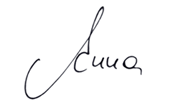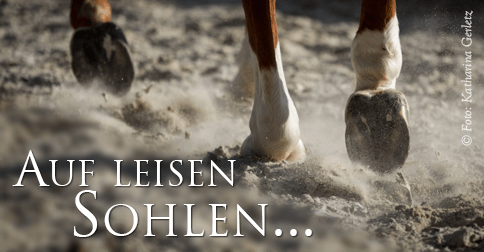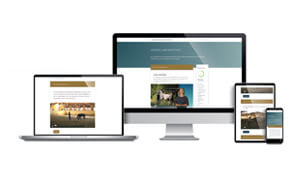Der Vorteil der Sommerakademie der Akademischen Reitkunst? Man lernt tolle Ausbilder kennen! Der Nachteil: Sie wohnen oft weit weit weg. Aus dem Nachteil einen Vorteil machen: Der Schwede Christofer Dahlgren kommt am 30. und 31. August nach Graz, um uns in „seiner“ Disziplin „Relax-Reitkunst“ – vom fortgeschrittenen Longieren bis zur Levade – Inputs zu geben. Auf der Sommerakademie in Dänemark habe ich ihn vorab für alle Interessierten interviewt:
Why did you choose the Academic Art of Riding to educate horses?
Christofer: 15 years ago i bought an arabian gelding. He was a pleasure to ride – but only in an indoor riding arena. At that time I read an article about the Academic Art of Riding and became interested. It was my horse that chose that path for me, because he liked this kind of training and thanks to him I also found my way in the Academic Art of Riding.
 Relaxation is one of your most important keywords. Why is it so essential for you to check if the horse is relaxed?
Relaxation is one of your most important keywords. Why is it so essential for you to check if the horse is relaxed?
Christofer: Without relaxation you cannot communicate. Training a horse means always to start with relaxation. So – as a rider or trainer you have to ask yourself: Is movement helping the horse to relax or is work in standing, or playing with the horse the key to get the relaxation. Playing means to me: Smile and practice. Find out what your horse likes to do – then smile. The work has to start with a smile in your face. Smiling is important to avoid mental pressure of the horse.
Your YouTube video about you and Saxo – showing the advanded lungeing – became really famous -what is your secret of advanced lungeing?
Christofer: I started with this kind of lungework three years ago because I wanted to learn something new. I already had a proper basis with Saxo but i wanted to work on canter and more collection and pirouettes. And I wanted to work the horse on the ground with more distance, so I had to find a way to work him on the lunge. During the next 3 – 5 month I discovered how to move the shoulders and control the hindlegs of the horse while lungeing it. The secret of the advanced lungeing is giving a proper frame to the horse – then you can ask for collection. I became inspired by my wife who does a lot of liberty dressage training. So I took some parts of the liberty dressage training which were suitable for the advanced lungeing training.
You told me that you see different types of characters in horses. can you tell me more about that?
Christofer: I use the definition by Pat Parelli: So we can talk about a left brain (which means a self confident horse) or a right brain (an insecure horse), or an introvert or extrovert type. Those different characters CAN help to decide how to start the training of a horse. But: Horses never behave like written in theory. So it is very important not to be fixed on these characterizations.
 Why is it so crucial to develop and to work on the mindset of the horse?
Why is it so crucial to develop and to work on the mindset of the horse?
Christofer: Well, because no body can work without it`s mind. We need the horses to WANT. Everyone will agree that the body, or biomechanics moves the horse – but the mind is the motor of all energy. You will never be able to treat horses the same and you will never be able to train a horse that does not want to be, play and work with you.
What can riders and spectators expect at the clinic in Graz?
Christofer: The clinic will contain the work on relaxation, balance, groundwork, advanced lungeing, clean gates, transitions and collection. BUT: Collection without relaxation will be a big NO NO! And our theory participants will be active as well. We will have also practical theory!
At the Summer Academy we were talking about aids. You told me that less is more, why?
Christofer: In our work with the horse we want to develop relaxation, lightness, balance and suppleness. Maybe we get the relaxation first and then start with the lightness and add the next goal and so on. We can’t have all at once. We have to work on straightness and bending to get a balanced horse. So the first step is how we approach the horse – how we ask for the bending. Start with a little bending and the horse will give you more motivation. So you can ask the horse to give a little more. Do not stress the horse. Instead be happy with a good result for that moment. If you ask for less you also have the opportunity to explain the horse the purpose of the aids and exercises.
You combine horsemanship and art of riding. Your keyword is relaxation. What is your opinion about the accusation of too much pressure in the horsemanship work these days?
Christofer: There are so many methods which provide good technical content. But you will never be able to work a horse without the proper feeling. So I recommend to everybody to school and work with empathy. Never be too technical because no horse is a mathematical equation. If you press button A you expect to get a decent Piaffe? That`s ridiculous. Bad horsemanship means for me: Chasing the horse around without giving it any options to react. A better way is to invite the horse to resolve a problem together with communication and relaxation. You can’t push a horse into a small corner where it has no option.
I really do not believe that there are so many dominant horses. I prefer to divide into well trained and untrained horses which sometimes seem to be dominant because they do not know what to expect. In my opinion working with domination is not good horsemanship – and it is never the system – it is always the human that gets it wrong. You can compare it with riding-systems: I don’t know a riding system that wants to develop stiff horses. You can say that there is no bad riding system. There are only many people who use a system in the wrong way. Good riding always stays good riding in a positive and trustful way.
Thank you Christofer Dahlgren for the interview!
In diesem Sinne – relax and take it easy – dann Reiten wir Einfach 🙂








Letzte Kommentare